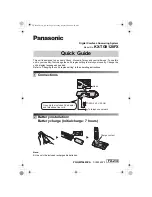
30
1
2
3
Corded Buttonhole
Machine setting:
1
Stitch
pattern:
2
Stitch width: 4 – 5
3
Stitch
length:
4
Thread tension: 3 – 5
5
Presser foot: Automatic buttonhole
foot R
1
With the buttonhole foot raised,
hook the
À
ller cord on the spur at
the back of the buttonhole foot.
Bring the cord under the foot and
hook the
À
ller cord into the notches
on the front of the foot to hold
them tight.
a
Spur
2
Draw both needle and bobbin
thread to the left. Lower the needle
into the fabric where the buttonhole
will start and lower the foot. Press
the foot control gently and sew
the buttonhole over the cord. The
sewing sequence is the same as the
automatic buttonhole.
b
Needle thread
c
Bobbin thread
d
Starting point
3
Pull the left end of the
À
ller cord
to tighten it. Thread the end of the
cord through a darning needle, draw
to the wrong side of the fabric and
cut. To cut the buttonhole opening,
refer to the instructions on page 28.
a
b
c
d
1
2
4
5
3
Summary of Contents for Emerald 116
Page 1: ...K E E P I N G T H E W O R L D S E W I N G User s Guide ...
Page 45: ......
Page 46: ......
















































